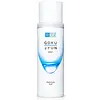What's inside
What's inside
 Key Ingredients
Key Ingredients

 Benefits
Benefits

 Concerns
Concerns

No concerns
 Ingredients Side-by-side
Ingredients Side-by-side

Water
Skin ConditioningButylene Glycol
HumectantGlycerin
Humectant1,2-Hexanediol
Skin ConditioningDiglycerin
HumectantPPG-10 Methyl Glucose Ether
Skin ConditioningDisodium Succinate
MaskingPropanediol
SolventSodium Hyaluronate
HumectantDisodium EDTA
Hydroxyethylcellulose
Emulsion StabilisingSuccinic Acid
BufferingCaprylhydroxamic Acid
Hydrolyzed Hyaluronic Acid
HumectantSodium Acetylated Hyaluronate
HumectantLactococcus/Hyaluronic Acid Ferment Filtrate
Water, Butylene Glycol, Glycerin, 1,2-Hexanediol, Diglycerin, PPG-10 Methyl Glucose Ether, Disodium Succinate, Propanediol, Sodium Hyaluronate, Disodium EDTA, Hydroxyethylcellulose, Succinic Acid, Caprylhydroxamic Acid, Hydrolyzed Hyaluronic Acid, Sodium Acetylated Hyaluronate, Lactococcus/Hyaluronic Acid Ferment Filtrate
Water
Skin ConditioningButylene Glycol
HumectantGlycerin
HumectantHydrogenated Lecithin
EmulsifyingDipropylene Glycol
HumectantAcetyl Glutamine
Skin ConditioningBetula Platyphylla Japonica Juice
Skin ConditioningBifida Ferment Lysate
Skin ConditioningCeramide Ng
Skin ConditioningEndomyces Ferment Filtrate
Skin ConditioningHydrolyzed Hyaluronic Acid
HumectantHydrolyzed Yeast Protein
Skin ConditioningHydroxyproline
Skin ConditioningRhodomyrtus Tomentosa Fruit Extract
HumectantSerine
MaskingSodium PCA
HumectantTocopherol
AntioxidantAcrylates/C10-30 Alkyl Acrylate Crosspolymer
Emulsion StabilisingCarbomer
Emulsion StabilisingDisodium Succinate
MaskingEctoin
Skin ConditioningGlycine Soja Sterols
EmollientPhytosterols
Skin ConditioningSodium Hydroxide
BufferingSuccinic Acid
BufferingXanthan Gum
EmulsifyingPhenoxyethanol
PreservativeSodium Benzoate
MaskingParfum
MaskingWater, Butylene Glycol, Glycerin, Hydrogenated Lecithin, Dipropylene Glycol, Acetyl Glutamine, Betula Platyphylla Japonica Juice, Bifida Ferment Lysate, Ceramide Ng, Endomyces Ferment Filtrate, Hydrolyzed Hyaluronic Acid, Hydrolyzed Yeast Protein, Hydroxyproline, Rhodomyrtus Tomentosa Fruit Extract, Serine, Sodium PCA, Tocopherol, Acrylates/C10-30 Alkyl Acrylate Crosspolymer, Carbomer, Disodium Succinate, Ectoin, Glycine Soja Sterols, Phytosterols, Sodium Hydroxide, Succinic Acid, Xanthan Gum, Phenoxyethanol, Sodium Benzoate, Parfum
 Reviews
Reviews

Ingredients Explained
These ingredients are found in both products.
Ingredients higher up in an ingredient list are typically present in a larger amount.
Butylene Glycol (or BG) is used within cosmetic products for a few different reasons:
Overall, Butylene Glycol is a safe and well-rounded ingredient that works well with other ingredients.
Though this ingredient works well with most skin types, some people with sensitive skin may experience a reaction such as allergic rashes, closed comedones, or itchiness.
Learn more about Butylene GlycolWe don't have a description for Disodium Succinate yet.
Glycerin is already naturally found in your skin. It helps moisturize and protect your skin.
A study from 2016 found glycerin to be more effective as a humectant than AHAs and hyaluronic acid.
As a humectant, it helps the skin stay hydrated by pulling moisture to your skin. The low molecular weight of glycerin allows it to pull moisture into the deeper layers of your skin.
Hydrated skin improves your skin barrier; Your skin barrier helps protect against irritants and bacteria.
Glycerin has also been found to have antimicrobial and antiviral properties. Due to these properties, glycerin is often used in wound and burn treatments.
In cosmetics, glycerin is usually derived from plants such as soybean or palm. However, it can also be sourced from animals, such as tallow or animal fat.
This ingredient is organic, colorless, odorless, and non-toxic.
Glycerin is the name for this ingredient in American English. British English uses Glycerol/Glycerine.
Learn more about GlycerinHydrolyzed Hyaluronic Acid is a form of hyaluronic acid. It is created by the hydrolysis of hyaluronic acid with a high molecular weight. Once created, Hydrolyzed Hyaluronic Acid has a low molecular weight.
Low molecular weight HA has been shown to hydrate and increase elasticity of the skin. Increasing elasticity is also associated with reduction of wrinkle depth.
One study found topical low molecular weight hyaluronic acid may be considered for the treatment of rosacea in the adult population. However, we always recommend speaking with a professional about your skin concerns.
Hyaluronic acids are a humectant. This means they draw moisture from the air. Hyaluronic acids help moisturize, soothe, and protect the skin.
Read more about other common forms of hyaluronic acid:
Learn more about Hydrolyzed Hyaluronic AcidSuccinic acid is an odorless white powder. It is naturally found in our bodies but can also be derived from living organisms.
Succinic acid is water-soluble. The pH level of this ingredient is between 4.2 and 5.6.
While succinic acid posesses antimicrobial, antioxidant, and anti-inflammatory properties, these properties have not been studied in skincare products.
Fun fact: Succinic acid was known as the 'spirit of amber' in the past. This is because it used to be derived from distilling amber.
Learn more about Succinic AcidWater. It's the most common cosmetic ingredient of all. You'll usually see it at the top of ingredient lists, meaning that it makes up the largest part of the product.
So why is it so popular? Water most often acts as a solvent - this means that it helps dissolve other ingredients into the formulation.
You'll also recognize water as that liquid we all need to stay alive. If you see this, drink a glass of water. Stay hydrated!
Learn more about Water